Curiosity - year

Long thought to write for the anniversary. Whether to retell the entire annual route of the rover, or to make a brief overview of his own posts, which traced the main milestones of his path, or tell how Curiosity turned my own life. A lot of things happened, and on Earth and on Mars, just can not retell. Therefore, I decided to do it easier: tell the main results of the mission. Fortunately, NASA has prepared a good cheat sheet for this .
Absolutely fantastic landing took place on August 6, 2012 at about 9:18 Moscow time and began the long journey "snail to Mount Fuji."
I invite everyone to come back a year ago, and relive the exciting moments of the Seven Minutes of Horror, collected in a two-minute JPL video:
')
JPL engineers and programmers became stars of the television screen that day, MarsCuriosity tweet “GALE CRATER I AM IN YOU !!!” scored 70 thousand reposts, people applauded in squares, parks and workplaces. And, I am sure, this happened not only in the USA - I myself monitored the landing, and then half a day I wanted to run through the corridors of the office and shout “He sat down!”, However, my colleagues would not understand me.
And this was how the landing from the board of the Curiosity looked:
(Sound artificial)
In the project of the rover is unique almost everything. Technology SkyCrane was tested for the first time, and confirmed its effectiveness. A set of scientific instruments, with rare exceptions, does not repeat anything that descended on Mars. In this case, Curiosity has absorbed the richest experience of operating the rovers, accumulated during previous expeditions. Now he is not afraid of darkness and dust storms due to the RTG; not afraid of sand dunes, medium in size, thanks to the wide and large wheels; not afraid of protruding stones, due to the high clearance. Now operators do not have to make a fuss with color filters to get color shots that brain conspirators from all over the world took out the brain for so long who do not understand how you can get color from three black-and-white frames. Now the rover does not need to "feel" every stone to conduct a chemical analysis - the laser spectrometer does it at a distance of up to 7 meters.
Let's return to summarizing the year. The main business of Curiosity and the realized goal is to search for geological rocks that have formed in fresh water. The discovery happened completely unexpectedly and quickly: the blue-gray clay mined by the Curiosity surprised everyone.
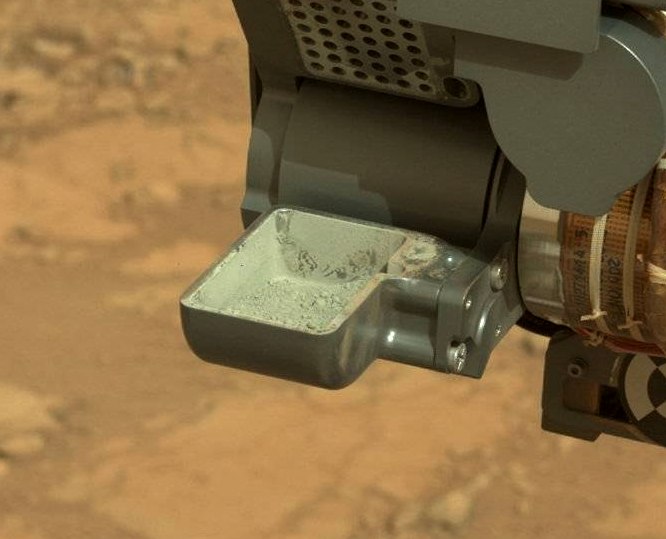
The importance of this discovery was not understood by all journalists, so some did not miss the opportunity to joke about the next 100,500th discovery of traces of water on Mars.
Actually today the rover found a mass of such traces after passing only 400 meters.
River pebbles, which could form only in a shallow mountain stream at least several kilometers long:

Gypsum veins that appeared when water saturated with calcium and sulfates filled cracks in stones and clay:

Frozen mud flows:

Sandstone slabs formed on the sandy bottom of the reservoir:
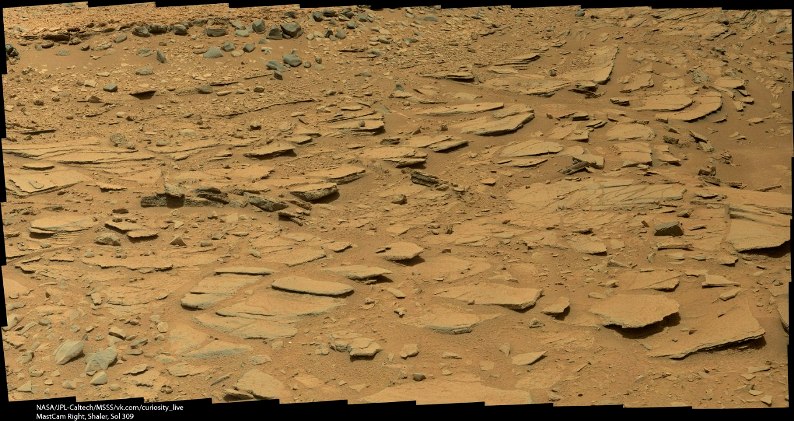
Full size
The importance of detecting clay is not so much in traces of water, but in the fact that this water did not have a high acidity, incompatible with life. The "red" color of all of Mars, and most of the geological rocks on its surface, is associated with the oxidation of, above all, iron, which gave rust. Previous rovers found either volcanic rocks or oxidized soil.
Scientists waited for clay in the crater of Gale, but assumed to find it at the foot of the mountain, to which Curiosity started moving only a month ago. In Glenelg went just out of curiosity and in order to practice. Nobody thought that the search for the ancient “acid-free” clay would be completed so quickly.
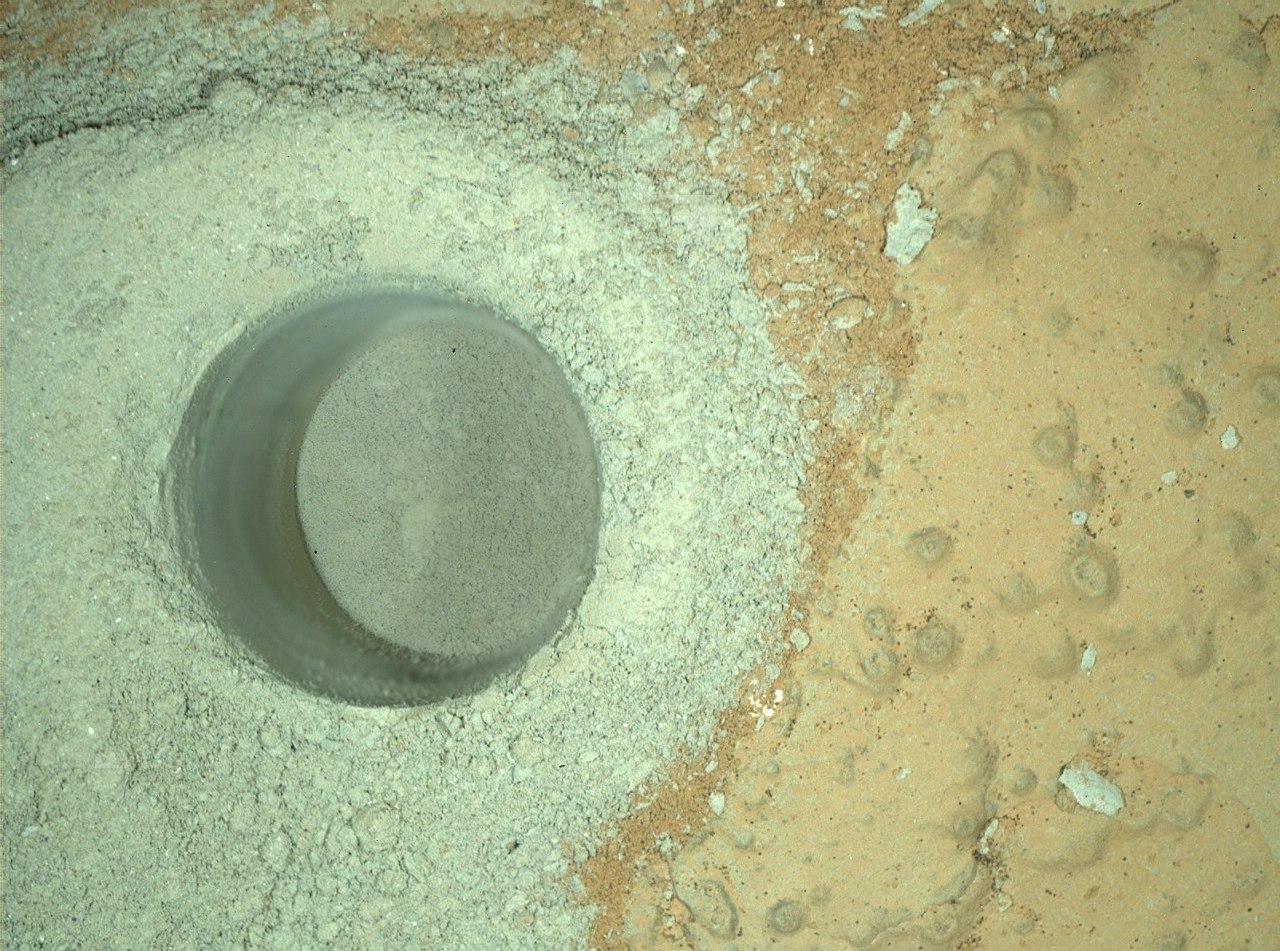
Such a surface meant that conditions on Mars were suitable for microbial life. No one hoped to find the microbes themselves, but the complex organic substances that would surely leave the life of the known form should have been found. But not found. Even methane in the atmosphere, which was seen from Earth, and he was at zero. Chloromethanes, which were announced in winter, may also be a mistake and a consequence of the effects of those substances that were brought from Earth.
Thus, the picture of ancient Mars, which is formed according to current Curiosity data, is a comfortable, warm, moist, habitable planet ... but without inhabitants. About how our Earth, before the birth of life. Maybe Mars was just unlucky, being too small, too light, too far from the Sun, too close to the asteroid belt. Maybe the Earth has something that the rest of the Solar System does not have.
We learn more precisely after diving into the oceans of Europe and Enceladus.
What happened to Mars, which turned from a heavenly place into a deadly desert, remains to be seen. And a detailed geological history will unfold before Curiosity, when it finally gets to Sharpe Mountain.
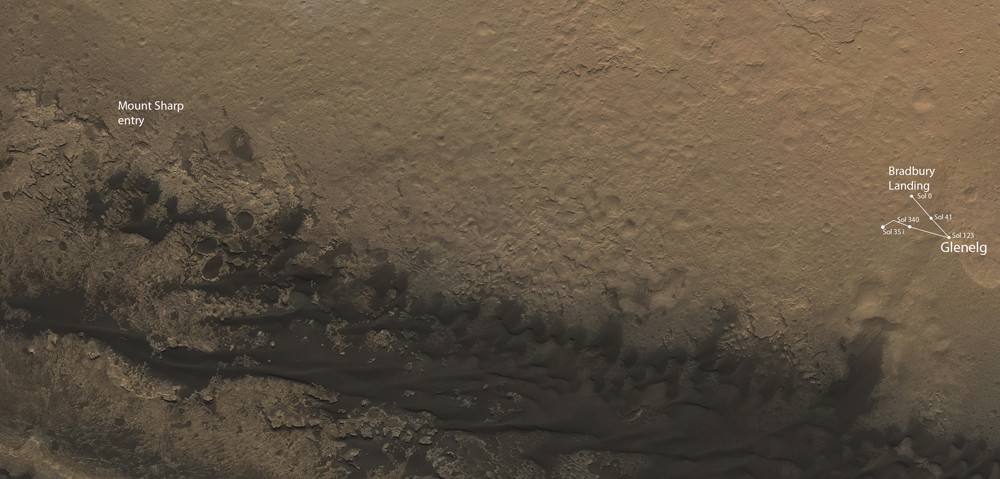
The path has just begun, but NASA is rushing ahead. Already set a record - almost 105 meters per day managed to drive. It seems ridiculously small, but they expect to spend about a year on all 8 km, and if every day they drove through a hundred, they would get much faster. So far, only 10% of the route has passed, but they did it in a month, so the pace has been quite good.
Read more about the first 800 meters of the road .
But the path already completed - in space - will help scientists in the design of a manned mission to Mars. Thanks to a radiation sensor, RAD Curiosity told what it expects people in interplanetary space.

The results are not encouraging either. At the very least, NASA’s radiation safety standards hinder the Martian expedition using the technology that exists now. Engineers have a difficult task: you must either develop reliable means of protection against radiation, or look for ways to quickly overcome the distances between the planets. Both require time and significant funds. We can only monitor the progress on this path and contribute to it as far as possible. How to do this, I will try to tell you more in a separate article.
NASA forgot to mention one more merit, although it made great efforts to do this. Mars rover as never closer Mars to humanity. He inspires people around the world to study the sciences, to strive for the future, to explore space. Only now we have the opportunity, almost live , to admire the giant and incredibly detailed panoramas of the neighboring planet.
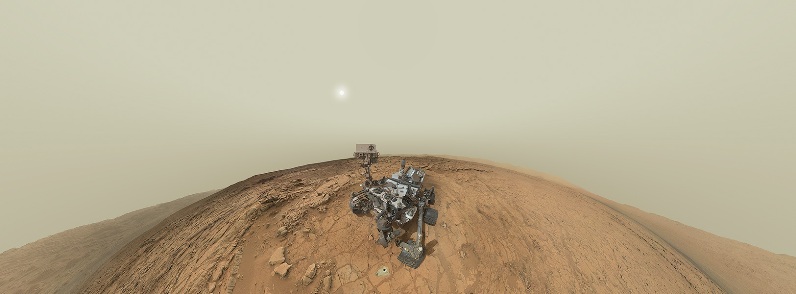
Full size.

Full size

Full size
We were able to get very close to the surface, and see it in natural color with details up to tenths of a millimeter:

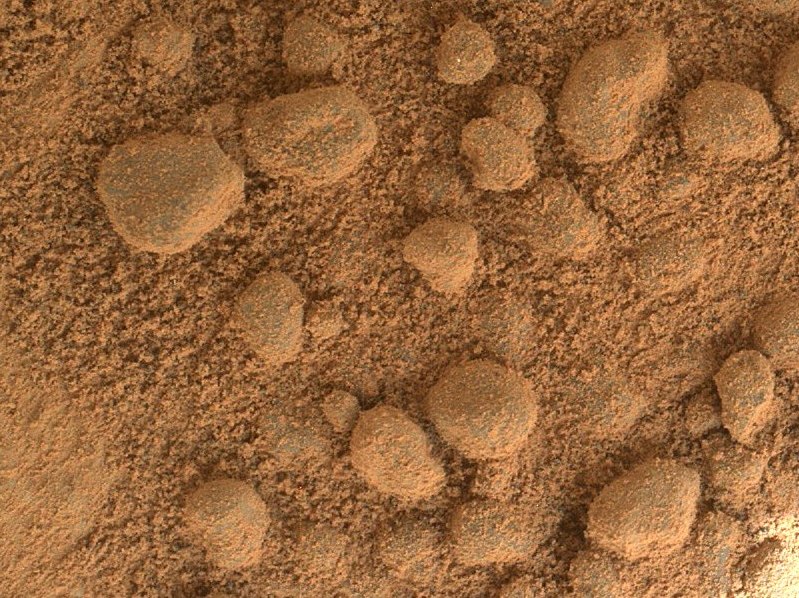
The rover for the first time managed to illuminate the surface of the fourth planet with white LED light, and removed from the side this process:
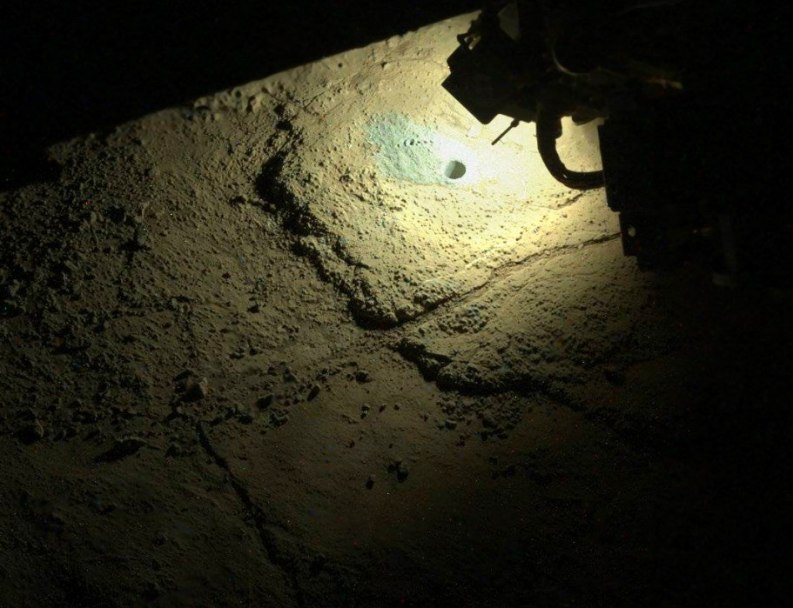
Remove the flight of Phobos
To see the dance of two moons of Mars in the night sky (the pictures came on August 6 at 5:06 pm MSK, that is, a few hours ago)
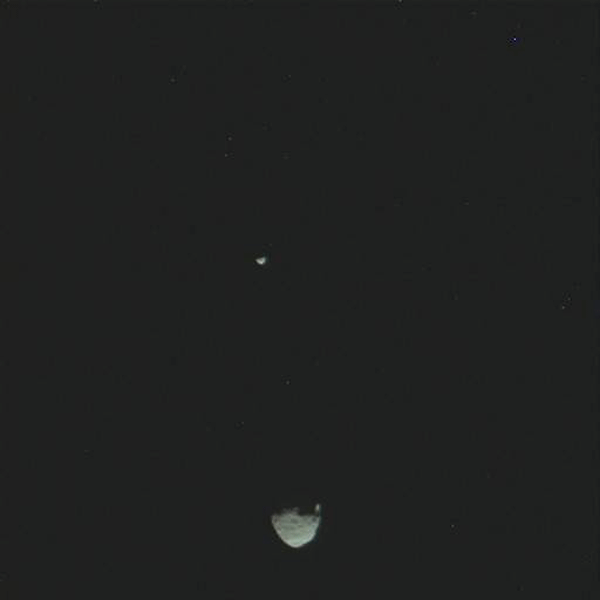
And a lonely month - in the evening:
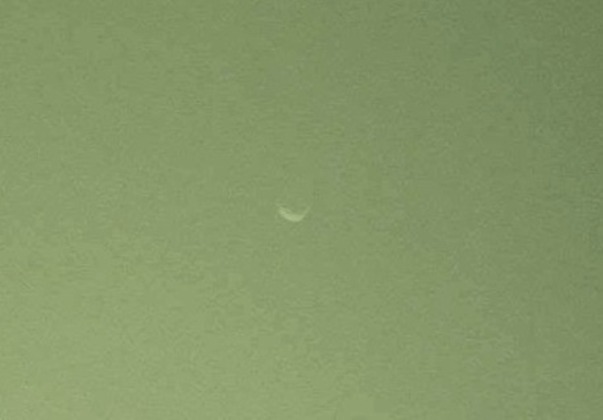
Catch "eclipses" (more correctly, this event is called transit):
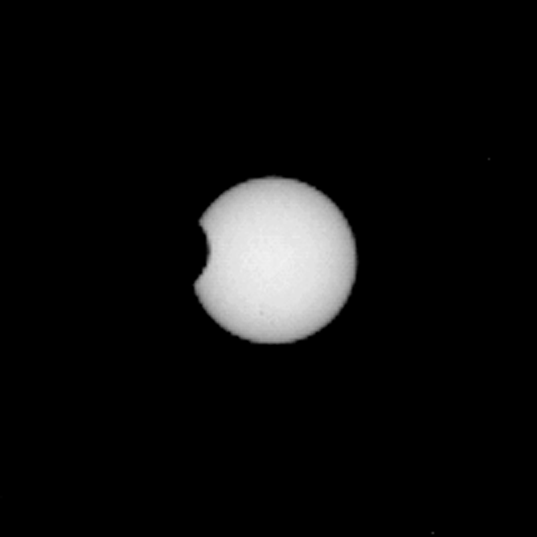
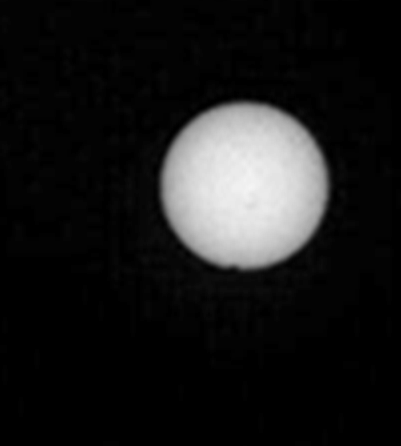
Sunset
(True, he shot on a black and white camera, and the color of the sky borrowed from the sunset color Spirit ).
There are still two comets ahead, and I’m sure there will be a colorful sunset.
One year is just the beginning. There are still thirteen years of Mars ahead, at least the atomic battery will provide no less than this period. Of course, after the initial rush, interest in Curiosity has declined considerably, but space enthusiasts from around the world continue to follow its every step. And I will try to regularly cover his alien life.
Source: https://habr.com/ru/post/188980/
All Articles